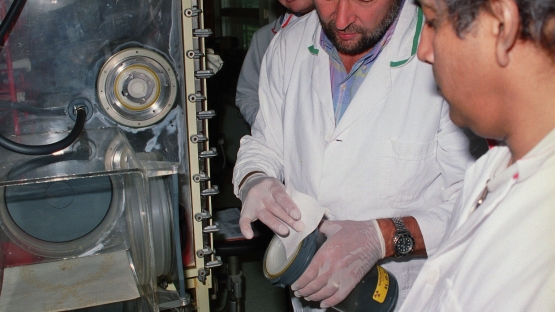The air is pressurized, carefully filtered and closely monitored. Scientists and technicians pass through air showers before entering. Welcome to the IAEA Environmental Sample Laboratory, or ‘clean laboratory’, in Seibersdorf, Austria, where 400 samples are analysed every year to verify that nuclear facilities have been used as declared.
The clean laboratory conditions are necessary so that the smallest traces of uranium and/or plutonium can be identified in the swipe samples taken by inspectors at research reactors, enrichment plants and other nuclear facilities for analysis. The machines used are so sensitive that they can pick out uranium and plutonium at weights below one trillionth of a gram in a sample.
“No matter how much you clean a kitchen, a speck of material dust always remains. This is also true in a nuclear facility. This enables environmental sample swipe analysis to detect what elements have been used,” said Stephan Vogt, Head of the Environmental Sample Laboratory.
While many safeguards verification methods aim to check and confirm the type and quantity of nuclear material declared by a State, environmental sampling is used to verify the absence of undeclared nuclear material.
How swipe sampling was born
In the 1990s, a nuclear facility in Iraq was bombed and there was no way for IAEA inspectors to collect conventional samples from the destroyed site. Instead, the inspectors innovated. They used cotton towels to ‘swipe’ items from the damaged facility to check whether there were any traces of the kind of elements used in the facility prior to its destruction. An entire spectrum of uranium — from depleted to highly enriched — was identified. The contaminated towels were able to reveal the history of the destroyed nuclear facility. The idea for swipe samples was born.
No matter how much you clean a kitchen, a speck of material dust always remains. This is also true in a nuclear facility. This enables environmental sample swipe analysis to detect what elements have been used.





